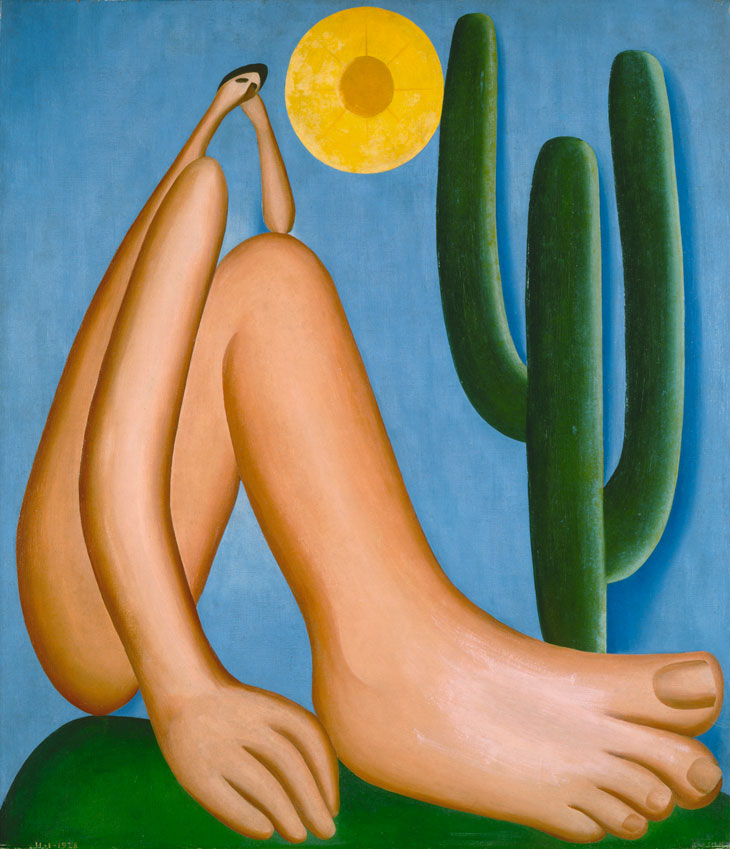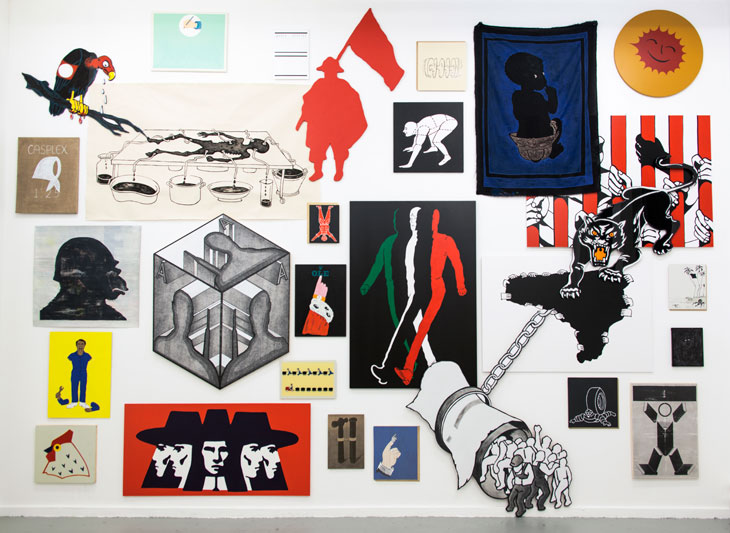It’s surprising to note that the Museum of Modern Art’s upcoming exhibition of work by Tarsila do Amaral – Tarsila, as she is known in her native Brazil – is the first US show solely devoted to perhaps the most important artist in the history of Latin American modernism (11 February–3 June 2018). The centrepiece of the show is undoubtedly Abaporu, painted in 1928 as a gift to Tarsila’s husband, the writer Oswald de Andrade. The title, selected by Andrade, is an old Tupi word that translates to mean ‘the man who eats people’; it was this painting that inspired Andrade to write his ‘Anthropophagite Manifesto’ celebrating Brazil’s history of ‘cannibalising’ other cultures – a landmark postcolonial text.
Abaporu (1928), Tarsila do Amaral. Collection MALBA, Museo de Arte Latinoamericano de Buenos Aires. © Tarsila do Amaral Licensing.

Also coming to MoMA later in the year (after a first stop at the Schaulager in Basel) is a retrospective of American artist Bruce Nauman (in Basel 17 March–26 August 2018; in New York 21 October 2018–17 March 2019). Nauman has been making work since the 1960s, when he became one of the first artists to experiment with video technology. Over the past five decades he has also worked with neon signs, drawing, photography, and performance; it will be interesting to see how this major survey manages to synthesise such a varied, and deeply experiential body of work.
Closer to home in the UK, I can’t wait to see Kettle’s Yard when it reopens after a two-year closure in February. The inaugural exhibition ‘Actions: The image of the world can be different’ (10 February–6 May), which seeks to affirm the possibilities of art to change society, brings together 38 artists ranging from Kettle’s Yard mainstays Henri Gaudier-Brzeska and Barbara Hepworth, political art pioneers such as Joseph Beuys and Gustav Metzger, and contemporary artists like Linder, Oscar Murillo and the late Khadija Saye.
The Leftovers (2016), Claudia Martínez Garay. Courtesy the artist and Ginsberg Galería, Lima, with support by Rijksakademie van Beeldende Kunsten, Amsterdam. Photo: Arturo Kameya

It should be an optimistic year for those who hope that art can change the world: a month after the reopening of Kettle’s Yard, the Schirn Kunsthalle in Frankfurt will unveil ‘Power to the People: Political Art Now’ (21 March–27 May 2018), which claims to identify in contemporary art a new protest culture that has arisen in response to the challenges facing democracy today. And at the New Museum in New York, the much-anticipated fourth edition of its triennial exhibition will be staged: ‘Songs for Sabotage’, curated by the institution’s own Gary Carrion-Murayari together with Alex Gartenfeld of the ICA Miami (13 February–27 May 2018). Through the work of roughly 30 emerging artists (collectives and individual), the survey aims to propose an alternative kind of ‘propaganda’ that exposes and dismantles existing ideologies. If it’s true that the best art is made in, and in response to, the worst of times, then we may be in for a very good year for new artistic production.
Gabrielle Schwarz is web editor of Apollo magazine.
Keep up with Apollo’s 12 Days selection of art highlights here.


